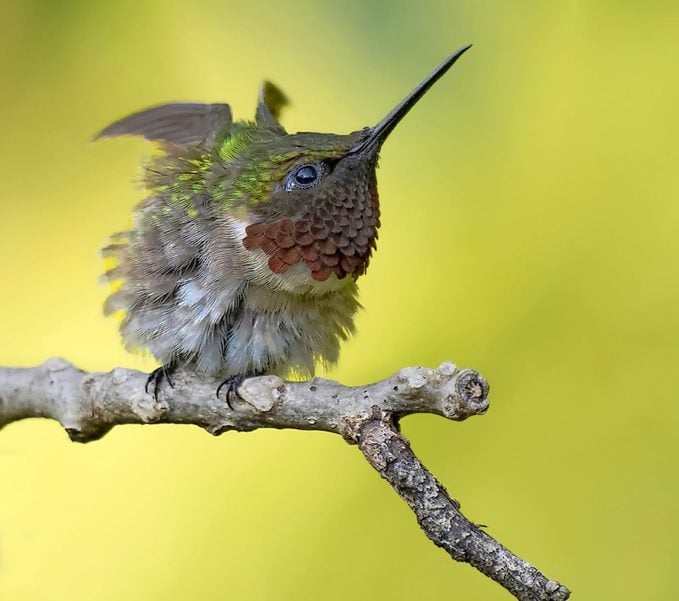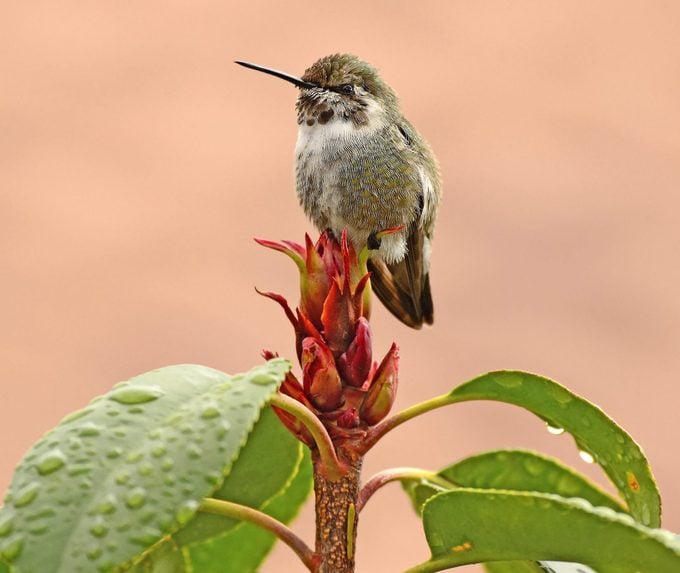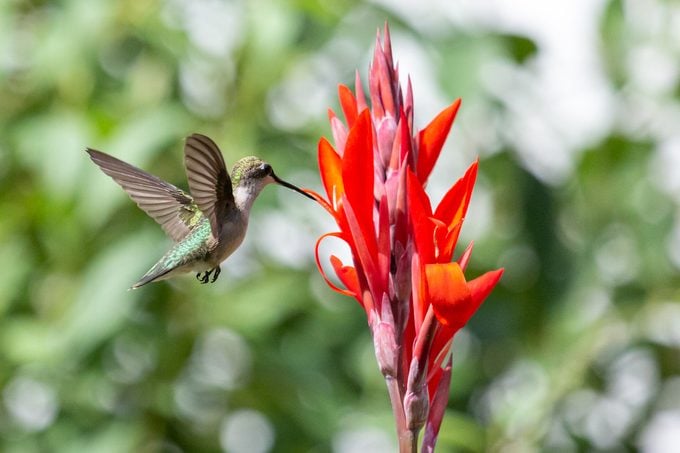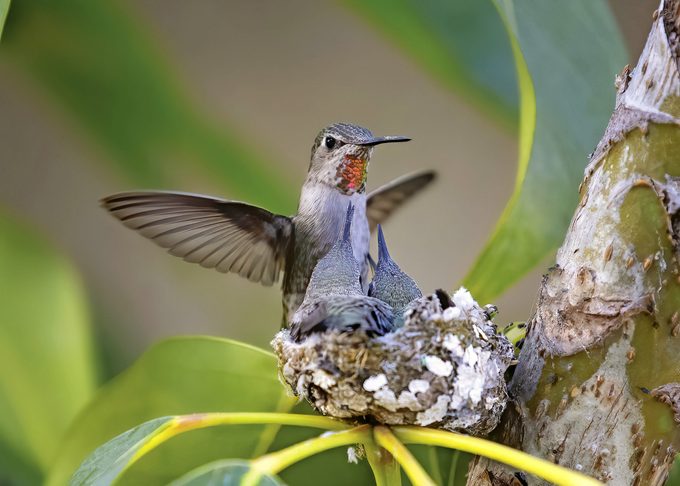Hummingbird Male Vs Female: How to Tell the Difference
Updated: Jul. 05, 2022
Hummingbirds come in many colors, but there are differences to look for so you can identify hummingbird male vs female birds.
Males and females of many bird species display different traits and behaviors, and this is especially true for hummingbirds. Next time you’re sitting by a backyard sugar-water feeder, use these clues to identify hummingbird male vs female flyers.
Learn how to attract hummingbirds with 10 expert tips.
Male vs Female Hummingbirds

According to Peter Pyle, staff biologist at The Institute for Bird Populations, the real difference between an adult male vs female hummingbird is in the head and neck feathers.
“The adult males are all pretty straight forward to identify just based on the coloration of what we call the gorget, which is the throat feathers, and the crown feathers, which are the glittering ones on the head that really flash when they hit the light correctly,” says Peter.
What makes hummingbird feathers so shimmery? Can hummingbirds walk?
Females do not have full bright gorgets like the males. Instead, they sport white throats that are sometimes spotted with dull gray-brown dots, and perhaps a small patch of iridescent feathers, depending on the species. They also tend to have slightly less vibrant back and wing feathers.
Discover 22 jaw-dropping hummingbird facts.
Why Male Hummingbirds Have Flashier Feathers

Male hummingbirds have showier feathers for one reason: to attract potential mates.
Peter says, “it’s all for display purposes.” He notes that they have an impressive trick to get the females’ attention.
“The males can flip their gorget feathers in the sun,” explains Peter. “So when a female lands near a male at his courting post, he knows how to flip his throat so it can look like a strobe light that flashes on and off.”
If you see a male and female hummingbird together in the breeding season, try to stand behind the female without disturbing them. You may be able to catch the flashes of his glittery throat in a courtship display.
Peter says that some males are better at this trick than others. That could be because they are more experienced or have fuller gorget feathers. “And that means that they are better conditioned birds,” he adds. “It helps a female choose a male who is better or higher quality, and her offspring will be more likely to survive.”
How fast do hummingbirds fly and flap their wings?
Young Hummingbirds vs Female Hummingbirds

In summer and fall, birders have a new challenge when young birds become more active and leave the nest and migrate south.
It’s relatively easy to tell an adult female and male hummingbird apart, but adult females and immature males are much easier to misidentify.
“You have to look at the details on the throat to tell a young male from a female—and in some species you really can’t,” says Peter. That’s because young male hummingbirds don’t hatch with bright neck feathers like the adult males have.
Peter explains that male hummingbirds start to get hints of their adult gorgets about a month after leaving the nest, which is around August or September in many areas. But it can happen even earlier in some species of hummingbirds, like the rufous hummingbird.
In late summer, you can rely on clues from the throat again. Young male hummingbirds may have scattered iridescent feathers or heavier dusky spotting on their throats.
The males grow up fast. After arriving at their wintering grounds, Peter says that they go through the complete process of molting and look just like the older males afterwards.
Juvenile females are far less confusing—they look basically the same as the adult female hummingbirds by the time that they leave the nest.
Size of Male and Female Hummingbirds

You may not believe it, but hummingbirds share something with birds from the raptor family. In general, females from both groups tend to be slightly larger than males. Meet the world’s largest and smallest hummingbirds.
“With raptors like owls and hawks, the females are bigger and there’s a really elegant theory behind that, involving prey size brought in to feed chicks,” Peter says. But he notes that it is unclear to researchers why female hummingbirds are larger than the males.
Along with their heftier build, female hummingbirds also have a longer bill. Learn how hummingbirds use their tongues and bills.
Do Males and Female Hummingbirds Behave Differently?

You may also be able to identify a male vs female hummingbird depending on what it is doing. During the breeding season, these birds take on dramatically different day-to-day tasks.
The males spend their time perched on top of trees and shrubs when they aren’t looking for food. They use these lookouts to defend their territory and feeders from rival males and to keep an eye out for females to mate with.
“It’s typical with all birds that bigger, stronger males may dominate a little bit more and be aggressive—especially towards other males,” says Peter.
He says Anna’s hummingbirds are the most common hummingbird species at his home in California. If you set a feeder up behind a house he adds, “an adult Anna’s will typically take over and case any other hummingbirds away from it, including females and young birds.”
Male hummingbirds are fiercely territorial, but that doesn’t make them good fathers. In fact, female hummingbirds do all of the work raising young. So if you see an adult bird in a hummingbird nest or tending to nestlings, you can be sure that it is a female.




















